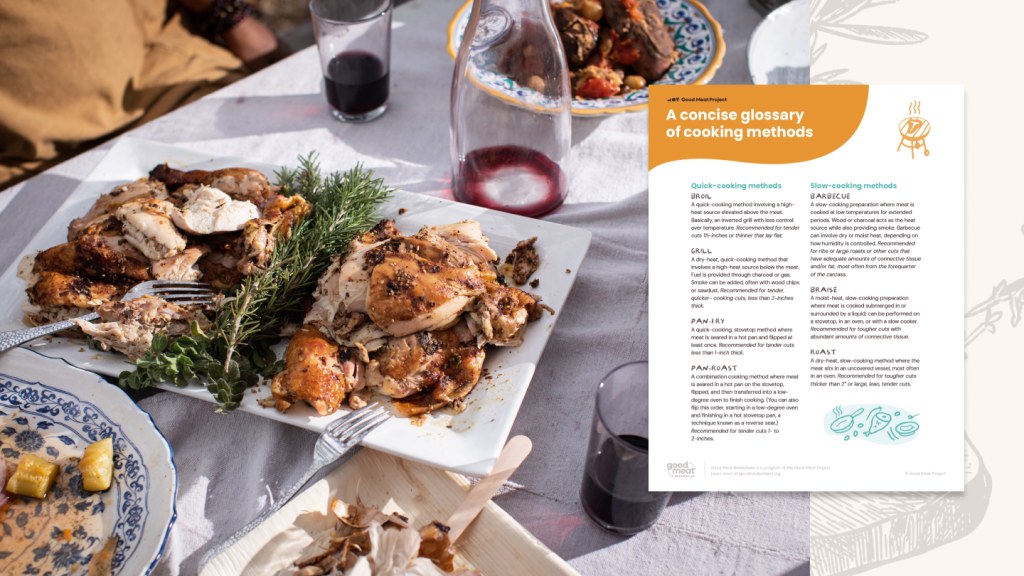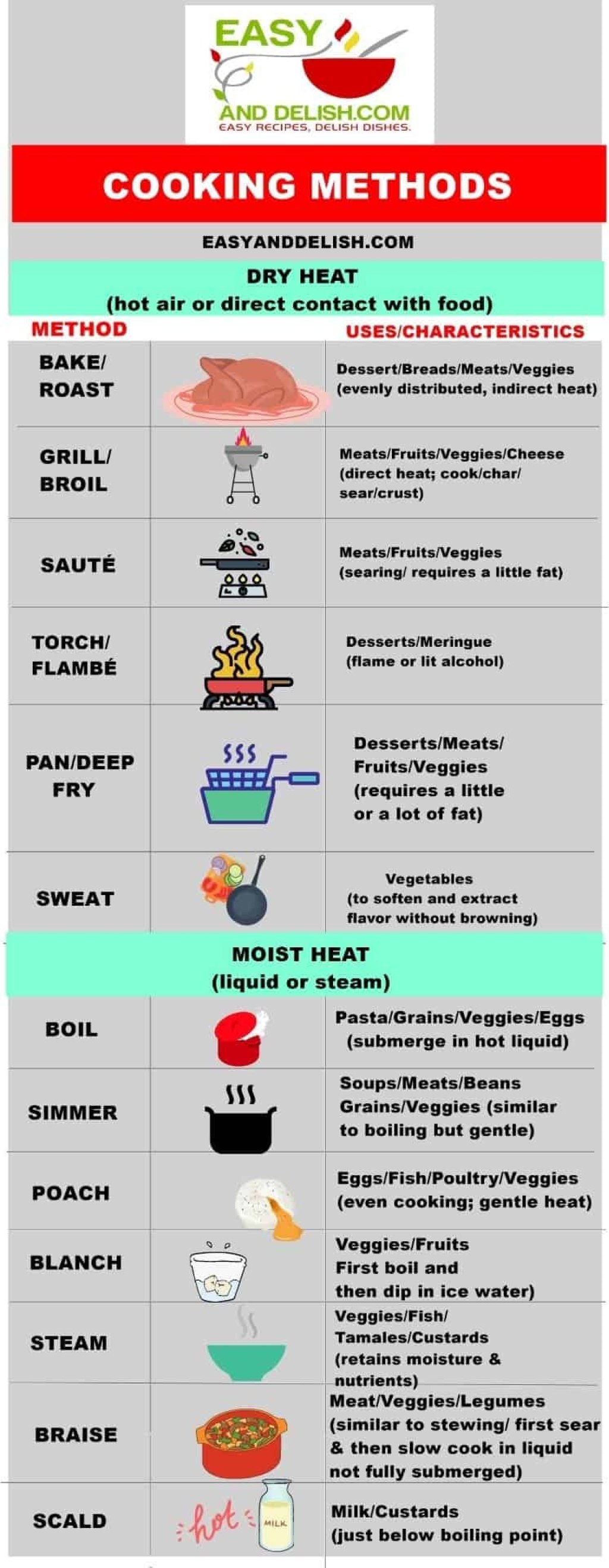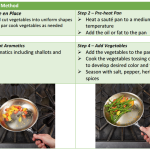The Ultimate Cooking Methods Glossary: Master The Art Of Culinary Techniques Now!
Cooking Methods Glossary: A Guide to Enhancing Your Culinary Skills
Dear Readers,
2 Picture Gallery: The Ultimate Cooking Methods Glossary: Master The Art Of Culinary Techniques Now!


Welcome to our comprehensive guide on the cooking methods glossary. Whether you’re an aspiring chef or simply someone looking to improve your culinary skills, this article will serve as an invaluable resource to expand your knowledge and understanding of various cooking techniques.
Introduction
Understanding different cooking methods is essential for any home cook or professional chef. From grilling and roasting to braising and steaming, each method imparts unique flavors and textures to your dishes. In this article, we will delve into the world of cooking methods, providing detailed explanations and insights into the what, who, when, where, why, and how of each technique.
What is a cooking method?

Image Source: goodmeatproject.org
A cooking method refers to a specific technique or process used to prepare food. It involves applying heat in various ways to transform raw ingredients into delicious, cooked meals. Different cooking methods result in different flavors, textures, and appearances of the final dish.
Who can benefit from learning about cooking methods?
Anyone with a passion for cooking can benefit from learning about different cooking methods. Whether you’re a novice in the kitchen or a seasoned chef, understanding these techniques will enhance your cooking skills and allow you to experiment with a wider range of recipes.
When should you use specific cooking methods?

Image Source: easyanddelish.com
Each cooking method has its own ideal applications. Some methods, such as boiling and poaching, are perfect for cooking delicate ingredients like fish or vegetables. Grilling and broiling are great for adding a smoky or charred flavor to meats. By knowing when to use each method, you can ensure that your dishes turn out perfectly cooked every time.
Where can you apply different cooking methods?
Cooking methods can be applied in various settings, from home kitchens to professional restaurants. Whether you’re cooking for yourself, your family, or a large group of people, understanding different techniques will allow you to adapt and create dishes that suit your specific needs and preferences.
Why is it important to learn about cooking methods?
Learning about cooking methods opens up a world of possibilities in the kitchen. It allows you to expand your recipe repertoire, create more flavorful dishes, and experiment with different flavor combinations. Additionally, understanding cooking methods helps you develop a deeper appreciation for the culinary arts and the science behind cooking.
How can you master different cooking methods?
Mastering cooking methods requires practice, patience, and a willingness to learn. Start by familiarizing yourself with the different techniques and their basic principles. Experiment with different recipes and ingredients to understand how each method affects flavor, texture, and overall cooking time. Over time, your skills and confidence in the kitchen will grow.
Advantages and Disadvantages of Cooking Methods
Boiling
Advantages: Boiling is a simple and quick method that is great for cooking pasta, rice, and vegetables. It helps retain nutrients and flavors in the food.
Disadvantages: Boiling can cause some nutrients to leach out into the cooking water, and it may result in a loss of texture and flavor in certain ingredients.
Baking
Advantages: Baking allows for even cooking and browning of dishes, resulting in delicious crusts and textures. It’s ideal for bread, pastries, and casseroles.
Disadvantages: Baking requires precise measurements and temperatures, and it can take longer than other cooking methods.
Grilling
Advantages: Grilling imparts a smoky, charred flavor to meats and vegetables, creating a unique taste profile. It’s a healthier option as excess fats drip off during cooking.
Disadvantages: Grilling requires outdoor space or specialized equipment, and it can be challenging to control the heat and prevent overcooking.
Sautéing
Advantages: Sautéing quickly cooks ingredients, preserving their flavors and textures. It’s perfect for stir-fries, searing meats, and sautéing vegetables.
Disadvantages: Sautéing requires constant attention and can result in uneven cooking if not done properly.
Braising
Advantages: Braising tenderizes tough cuts of meat and infuses them with rich flavors. It’s great for stews, roasts, and hearty dishes.
Disadvantages: Braising takes longer than other methods and requires planning ahead, as it involves slow cooking at low temperatures.
FAQs (Frequently Asked Questions)
1. Can I substitute one cooking method for another?
Yes, in some cases, you can substitute one cooking method for another. However, it’s important to consider the desired outcome and adjust cooking times and temperatures accordingly.
2. How can I prevent food from sticking to the pan when sautéing?
To prevent food from sticking to the pan, make sure it is properly preheated and add enough cooking oil or butter. Additionally, avoid overcrowding the pan, as this can lower the temperature and cause food to stick.
3. Are there any cooking methods that are suitable for vegetarians?
Yes, many cooking methods are suitable for vegetarians. Methods like roasting, grilling, and sautéing work well with vegetables, allowing you to create delicious plant-based meals.
4. Can I combine different cooking methods in one dish?
Absolutely! Combining cooking methods adds depth of flavor and texture to your dishes. For example, you can sear meat before braising it or roast vegetables before adding them to a stir-fry.
5. How do I know when a dish is fully cooked?
The best way to determine if a dish is fully cooked is by using a food thermometer. Different foods have different safe internal temperatures, so it’s essential to measure the temperature to ensure food safety.
Conclusion
By familiarizing yourself with various cooking methods, you can elevate your culinary skills and explore a world of flavors. Remember to practice and experiment with different techniques to develop your own unique style in the kitchen. Whether you’re simmering a comforting stew or grilling juicy steaks, understanding cooking methods will help you create memorable meals for yourself and your loved ones.
Now, armed with this cooking methods glossary, it’s time to get cooking and unleash your creativity in the kitchen. Happy cooking, dear readers!
Final Remarks
Disclaimer: The information provided in this article is for educational purposes only. It is not intended to be a substitute for professional culinary advice or guidance. Always follow proper cooking techniques and food safety guidelines when preparing meals.
This post topic: Cooking Techniques

